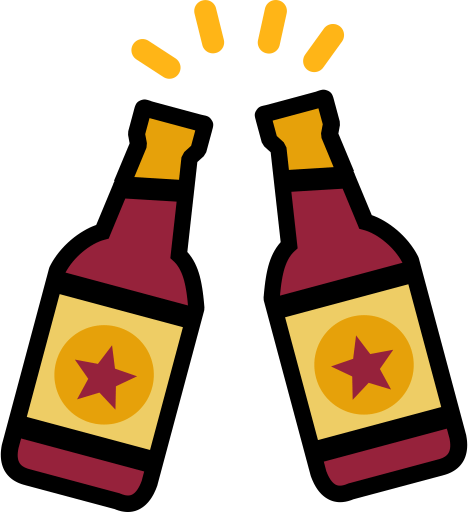What other sources are there for yeast without purchasing specific supplies of any kind?
I’ve done several lactose fermentation experiments and am currently playing with figurative fire by washing and running fruits through a food processor, letting them go active in a (burped) container and then adding them to other fruit juices. Currently I have a small apple for yeast that I added to pealed lemons and some lemon juice. I have no expectations for the results, and intend on buying nothing.
Natural wine maybe has some active yeast left in it. Many non natural wines will use metabisulfates to stabilize the wine. I imagine this isn’t beneficial to cropping yeast from it.
Other sources of yeast? It’s literally everywhere. Have you attempted spontaneous fermentation like Belgian’s do in lambic beers?
Yes. I’m currently on my 7th and 8th experiments with wild ferments.
I even did something of a fond with my first attempt using a mason jar of fermented blueberries in a 3% salt brine combined with the stock leftover from a 5 pound roast that spent 4 hours on the smoker first and 6 more in a dutch oven. That yielded around 1000ml of hardwood smoky flavored beef stock that originally started with chicken stock and a beer with garlic/onion/pepper etc. The blueberries yielded around 600ml of a savory juice that was like a slightly fruity soy sauce. I reduced that entire mix down to ~600ml and have my first real sauce. It is something like a smokey fruity Worcestershire (garum like fish sauce) sauce.
I’m also working with cherries, and a bunch of variations on a spicy lemon garlic/ginger to explore this area.
I think that wine yeasts are basically refined strains of the common bread yeast, saccharomyces cerevisiae. Actually a lot of traditional recipes for alcoholic beverages call for bread yeast, like beetroot sherry for example, because that’s what regular people had access to in the olden days.
Interesting. I thought bread yeast was limited to ~10% abv. Am I missing something or misinformed?
It probably varies, but in principle yeah. Bread yeast main purpose is CO2 production and in winemaking gases are considered a side effect. Hence the refinement into different strains. Still, even 8% homemade wine is better than none.
There are also people doing all kinds of wild ferments with both wine and ciders from whatever yeasts happen to be in the air and battle it out and become dominant. Sort of you never know what you’ll end up with. I don’t know much about it but it seems like fun.
I once made a batch of mead using literally bread yeast and it ate up all the sugars finishing at around 16% ABV. It didn’t taste good though …
I experimented with wild yeasts.
If you can’t get/don’t want to use lab yeasts (dried in bag), the best bet is to start with about 1l of fruit juice or wort, put it in Mason jar or some container with larger opening and let it sit outside in garden or on a window over night.
Put it inside, let it ferment completely (it will take about 7days) in somewhat warm room (20 - 25°C). Taste it and smell it if it is good (no off smells and off flavors like acid, bitter or rotten). And use it as starter.
I messed with yeasts about 2 years ago with petri dishes, isolates, microscope and stuff but this basic recipe will do it. Bear in mind that it is about 50/50 if you get good or bad strains so make multiple batches and use only the most promising ones.
Yeasts are pretty much everywhere so you will most likely catch something, but you don’t want any bacteria or mold.
I will try to find yt vids about this (someone recommended me sth on reddit) and post them there.
Not sure if the information is still current, as it was a while ago, but I was taught that the yeast for wine originally came from the grapes themselves, it settles on the fruit from the air as it ripens. They named it Saccharomyces ellipsoideus or something of the sort, related to the beer yeast S. cerevisae, but not the same. Nowadays winemakers use lab cultured yeasts for consistency though.
Point being, if you can get hold of some grapes that you know weren’t exposed to nasty stuff (i.e. not grown near a highway), try not washing them and just smashing them, skin and all, and see what ferments. Put an airlock on to prevent acetic acid formation and try going from there. If using water to dilute or wash stuff, make sure it’s chlorine free. One campden tablet to 20L should do it.
In Georgia (the country) they make wine by smashing the whole grape (including stems) and fermenting it in a clay vessel (qvevri) without any additives. The winemakers told me all the yeast is on the grape skins and that washing them removes it. The wine does have a distinctly different taste versus wine make with cultured yeast.
The fresh fruit should work. Are you asking if a bottle of wine would give you yeast? The answer is generally no. Most wine has stuff added to stop fermentation. It may also be filtered to remove yeasts, etc.
What about when the wine has some extra bubbly? I thought that was due to post bottling activity. Would that also mean some live activity potential?
Maybe! I don’t know enough about making champaigne to be able to say.



